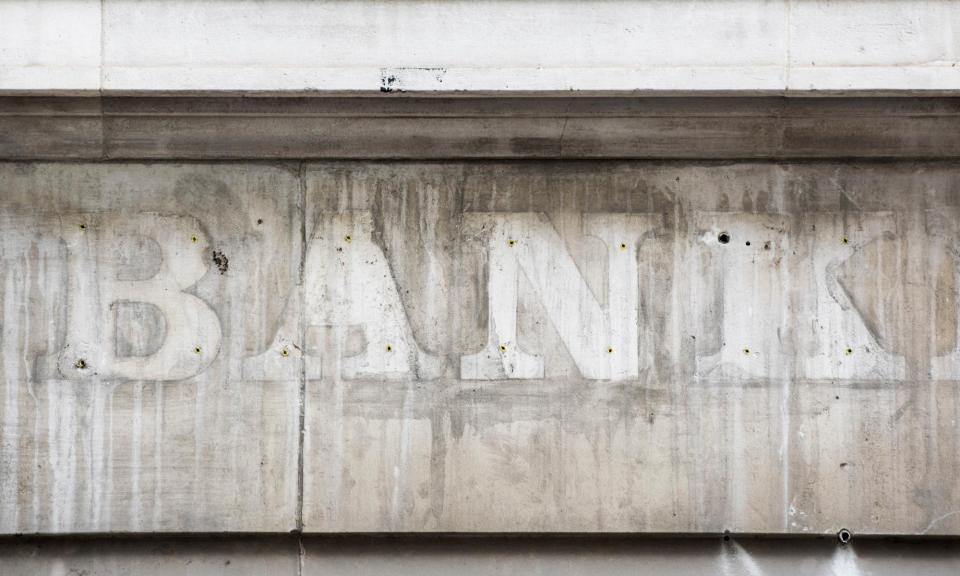More than 6,000 UK bank branches now gone in nine years of ‘disastrous’ closures

The number of UK bank branches that have shut their doors for good over the last nine years will pass 6,000 on Friday, and by the end of the year the pace of closures may leave 33 parliamentary constituencies – including two in London – without a single branch.
The tally is being published by the consumer group Which? as it seeks to make the “avalanche” of closures and the “disastrous” impact they can have on local communities an election battleground.
Eight more Barclays branches are due to close on Friday, taking the total to 6,005 since 2015, when Which? began counting.
Barclays is the bank accused of closing the most branches: its decommissioned outlets are said to make up about 20% (1,216) of the total.
The rate of closures hit a peak in 2017 but had appeared to slow before what the consumer group describes as a “troubling surge” in recent months. It accuses banks of “seemingly engaging in a race to close branches” after the government announced plans in 2020 for laws to protect access to cash that would potentially make it more difficult to shut a branch if alternative provision was lacking.
Fresh rounds of closures are being announced every few weeks, with banks justifying the reduction of their networks on the grounds that customers are spurning traditional counter services in favour of banking online and via mobile phones.
Related: ‘It will affect all of us’: how bank closures have hit one UK town
There have already been 200 closures scheduled for the rest of 2024, including 50 from NatWest, 43 from Lloyds, 28 from TSB, 26 from Halifax, 20 from Royal Bank of Scotland and 14 from Barclays. The number of lost branches is equal to 60% of the national network in place nine years ago.
In London, two constituencies – Erith and Thamesmead, and Dagenham and Rainham – are expected to become banking blackspots, as is Sedgefield, the old seat of former prime minister Tony Blair.
The banking trade body UK Finance said the change in customer habits – with increasing numbers going online and using mobile banking – meant banks “had to make difficult decisions about maintaining their branches”.
While millions of consumers have made the switch to banking digitally, there remain significant numbers not yet ready or willing to make that leap who need accessible alternatives.
With a general election taking place in the coming months, Which? said the next government should commit to delivering at least 200 banking hubs in the first two years following the election.
The hubs operate in a similar way to a standard branch, with a counter service run by Post Office staff where customers of almost any bank can withdraw and deposit cash, make bill payments and carry out regular transactions.
Last Friday, the UK’s 50th banking hub opened, and Cash Access UK – a bank-funded organisation set up to protect nationwide access to cash – said it had set its sights on reaching 100 by the end of the year.
Some banks still insist on customers coming to a physical branch to carry out certain tasks such as registering power of attorney, which for some individuals can necessitate long round trips by bus or taxi to their nearest outlet.
Sam Richardson, deputy editor of Which? Money, said that while some people may hardly notice the closure of their local branch, “for others reliant on face-to-face services, the impact can be disastrous”.
In response to being named the individual bank that had shut the most branches, Barclays said: “As visits to branches continue to fall, we need to adapt to provide the best service for all our customers. Where levels of demand don’t support a branch, we maintain an in-person presence though our Barclays Local network, live in over 350 locations, based in libraries, town halls, mobile vans and our banking pods.”
Constituencies expected to have no bank branches by the end of the year
Barnsley East (estimated population: 94,000)
Bolton West (98,000)
Bradford South (106,000)
Bury South (103,000)
Central Suffolk and North Ipswich (102,000)
Chatham and Aylesford (103,000)
Clwyd South (70,000)
Colne Valley (112,000)
Dagenham and Rainham (117,000)
Denton and Reddish (88,000)
Don Valley (99,000)
East Worthing and Shoreham (99,000)
Erith and Thamesmead (117,000)
Glasgow North East (88,000)
Liverpool, West Derby (94,000)
Mid Bedfordshire (121,000)
Mid Derbyshire (83,000)
Newport East (84,000)
North East Derbyshire (92,000)
Nottingham East (98,000)
Penistone and Stocksbridge (89,000)
Plymouth Moor View (94,000)
Reading West (112,000)
Rhondda (68,000)
Sedgefield (85,000)
Sheffield Hallam (85,000)
St Helens North (100,000)
Stone (86,000)
Swansea East (81,000)
Warrington North (95,000)
Wentworth and Dearne (100,000)
Wirral West (68,000)
York Outer (92,000)
Source: Which?

 Yahoo Finance
Yahoo Finance 